|
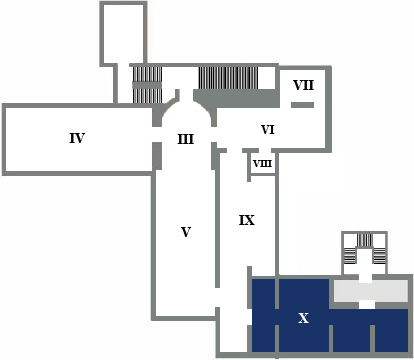
On show in Room X are the eighteenth-century paintings. The division of the artistic genres which began in the 17th century became more rooted during this new century; the landscape, painted either with precision and realism or as a capriccio, was certainly one of the favourite genres.
|
|
Fra Galgario
Portrait of a youth
first half of 18th century
The Portrait of a youth by Fra Galgario is datable to about the fourth decade of the 18th century. The young man, with his casual, natural air, stares wide-eyed out of the canvas at his century. Probably from the middle classes, he wears a turban-like head-dress, a loose overcoat and gloves.
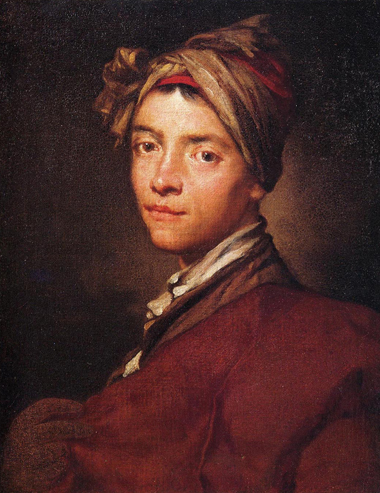
|
|
Pitocchetto
Portrait of a wayfarer
second half of 18th century
The Portrait of a wayfarer, typical of the repertoire of Pitocchetto, was probably painted around 1788. In line with the theories of the Enlightenment, the artist pauses to observe and portray a miserable vagrant.
The face of the ragged protagonist seems to be marked by the hardships of his existence. He is however shown with the monumental dignity of the gentleman, according to the canons of official portraiture.
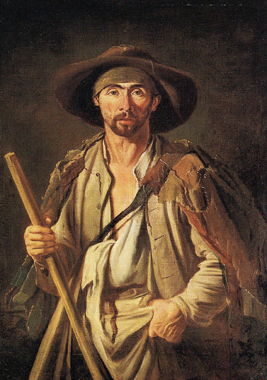
|
|
Giovanni Paolo Pannini
Capriccio with Colosseum
18th century
This canvas, perhaps painted by the artist with the collaboration of workshop apprentices, is the clear product of landscape painting according to 18th-century canons. Pannini paints the city of Rome as it was at the time of the Romans, without any historical truth. It is an imaginary archaeological landscape where celebrated ancient monuments actually far from each other stand side by side, and where characters in ancient dress animate the painting as in a theatrical scene.

|
|
Gaspar van Wittel
Veduta of piazza del Quirinale
end of 17th century
At the end of the 17th century Gaspar Van Wittel painted the Rome of his time from piazza del Quirinale with minute precision. The description starts from palazzo del Quirinale, then the residence of the Pope, and works back as far as the dome of St. Peter's. In this wide-reaching view nothing escapes the careful investigation of human reason.
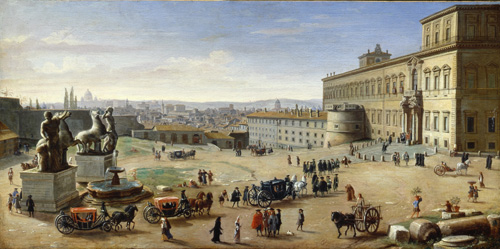
|
|
Bernardo Bellotto
View of piazza San Marco
18th century
The canvas was painted by Bernardo Bellotto, the nephew of Canaletto, perhaps with the help of one or more collaborators. Piazza San Marco, buzzing with its everyday activities, is seen from piazzetta dei Leoni: a glance stolen from an unusual viewpoint.
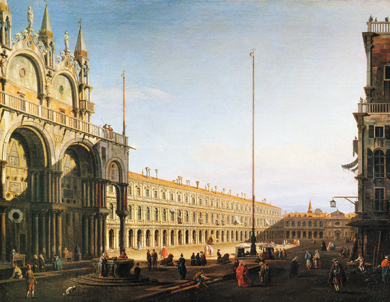
|
|
Canaletto
Capriccio with tower and Gothic building in the distance on the lagoon
end of 18th century
This well-conserved painting dates to the final years of the 18th century. It is one of Canaletto's typical capriccios, with an ancient circular tower used as a residence overlooking a lagoon recalling Venice, and a Gothic building of clear Anglo-Saxon derivation in the distance.
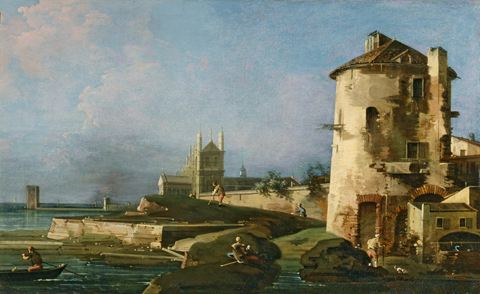
|